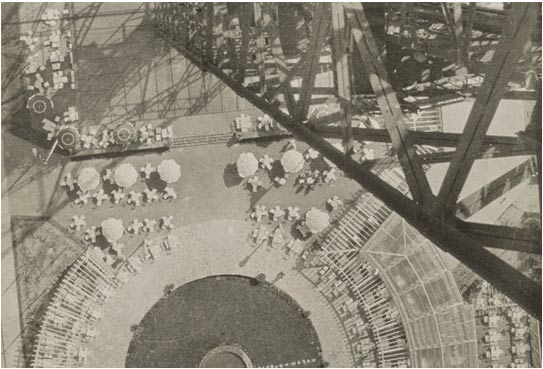MODERN LIVING
Scenes of urban bustle or new construction, frequently taken from raking angles or in extreme close-up, typify a modern style of image-making that attained tremendous popularity in the years around 1930. With its dizzying perspective captured from the heights of Germany’s newest steel construction (the site of the first television transmission tests in 1929), Moholy-Nagy’s Radio Tower Berlin reveals its modernity in both subject matter and style. The burgeoning image world served not just to propagate modernity but to domesticate it, to render it palatable in a region filled with anxieties over such sudden and massive changes. “New photography” — meaning both pictures of expressly modern subjects and expressly modern pictures — functioned as an advertisement for modernity.
Many great talents of the international illustrated press came out of the central European “photomania”; Life magazine and the Parisian tabloid Vu, for example, are unthinkable without skilled photographers from central Europe, such as Martin Munkacsi or André Kertész (both born in Hungary). The daily press also abounded in intellectual commentary of a breadth and caliber unmatched elsewhere: cultural critics such as Walter Benjamin and Siegfried Kracauer (Germany), Josef and Karel Čapek (Czechoslovakia), and Karl Kraus (Austria) all turned to photography in their meditations on the meaning of modern life.

László Moholy-Nagy, Radio Tower Berlin, 1928 (detail) - view full image
- The Cut-and-Paste World: Recovering from War
- Laboratories and Classrooms
- New Women — New Men
- Modern Living
- The Spread of Surrealism
- Activist Documents
- Land Without a Name
- The Cut-and-Paste World: War Returns

